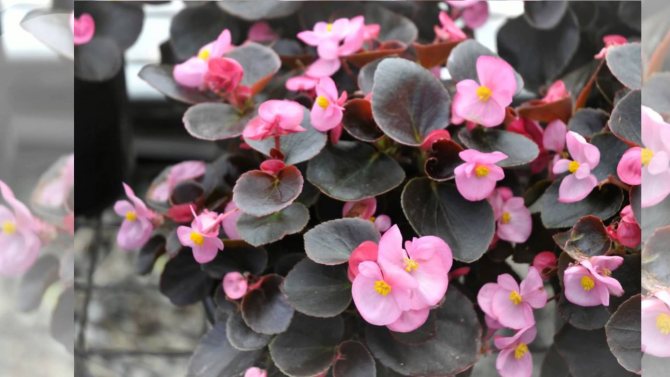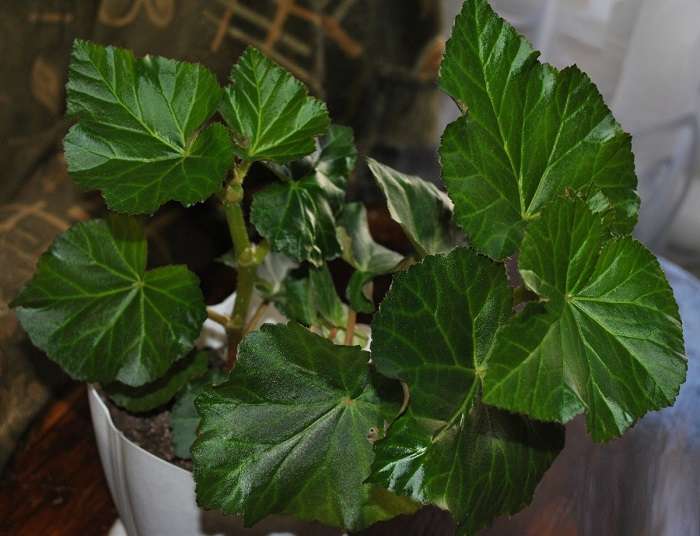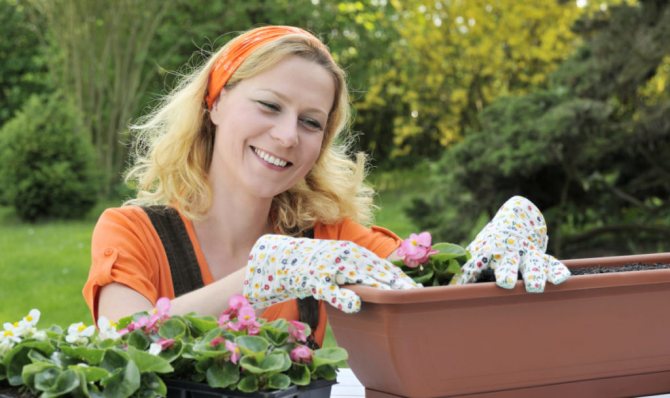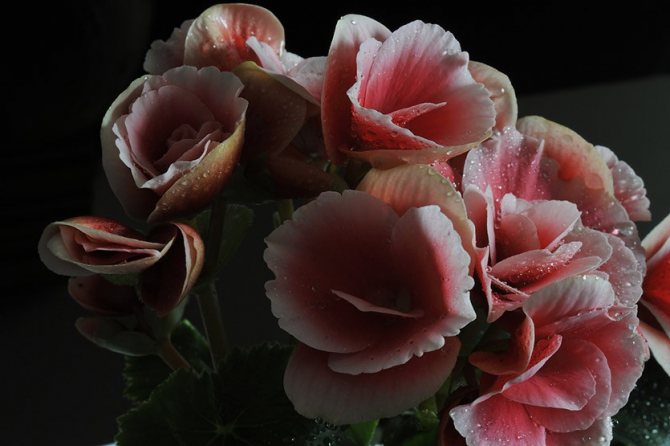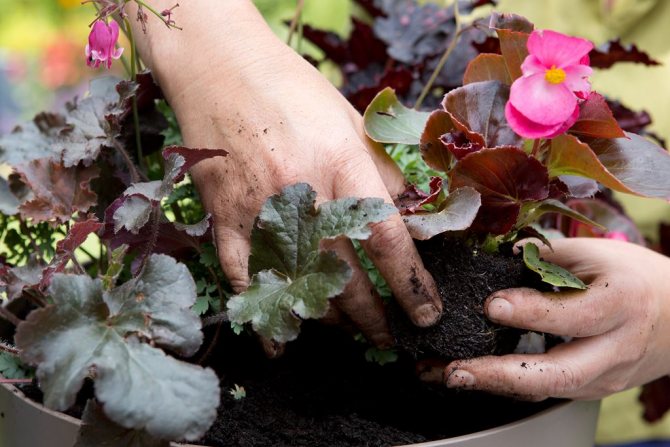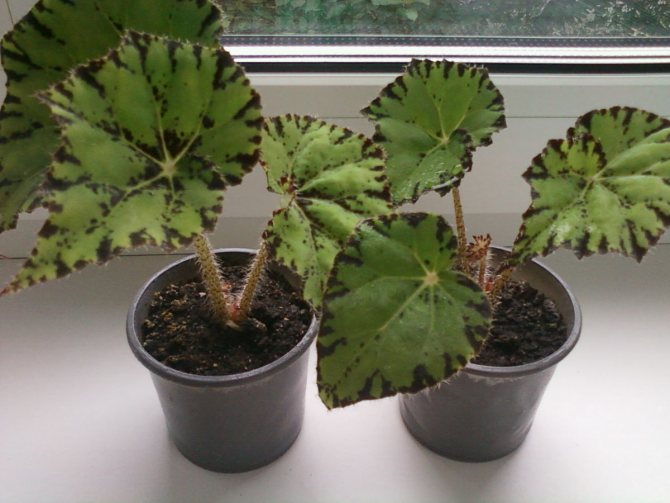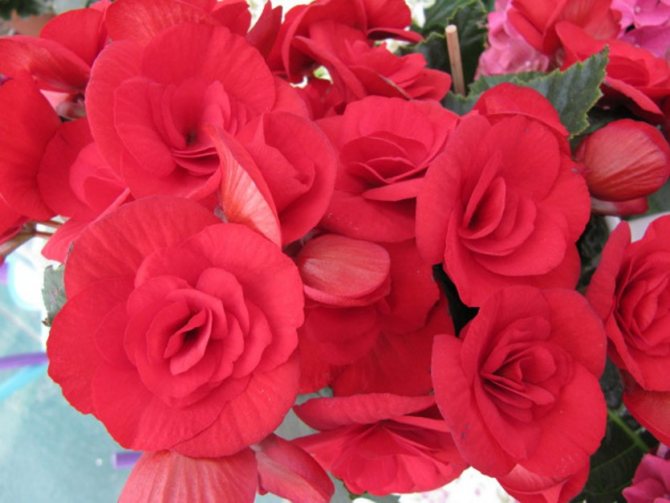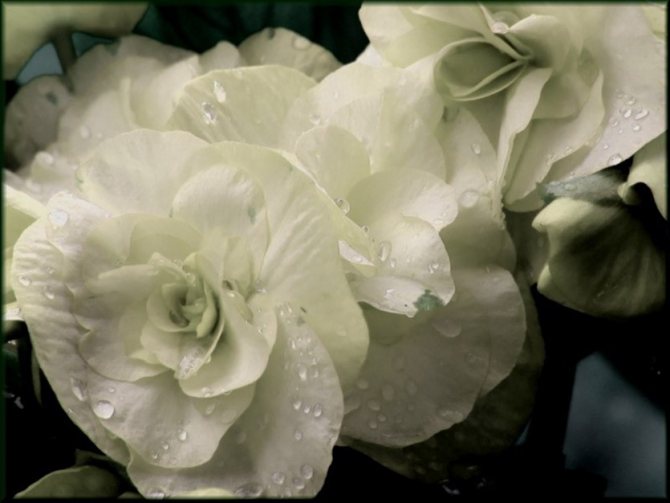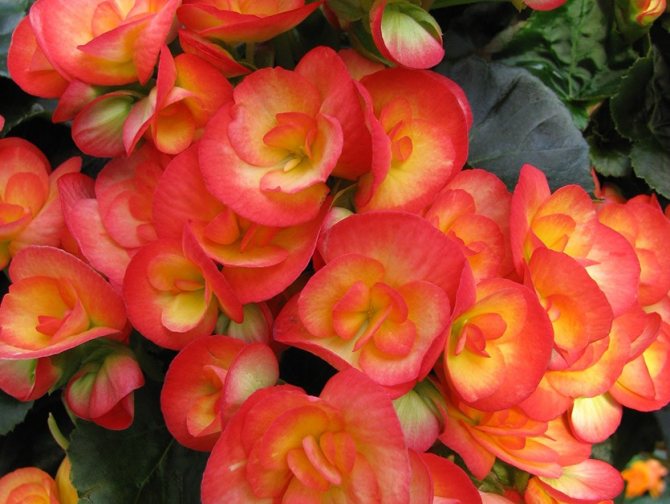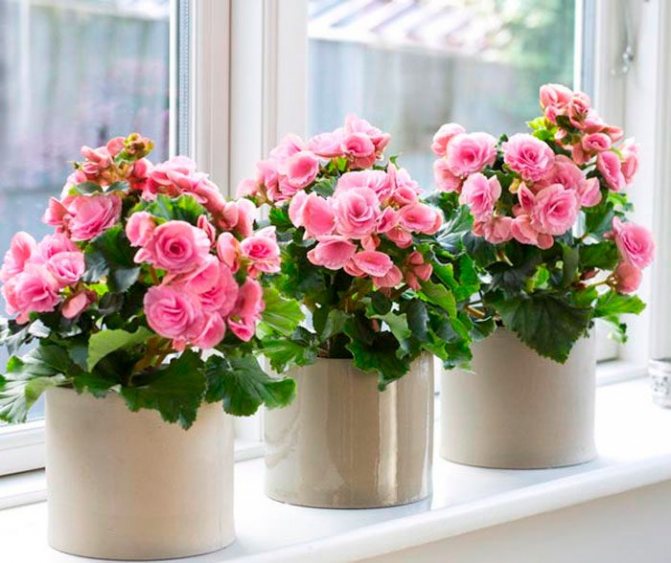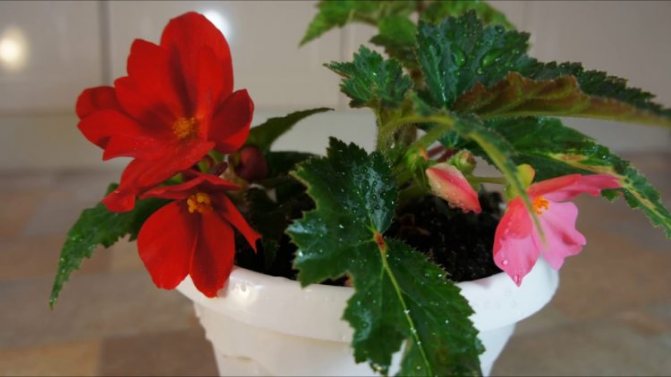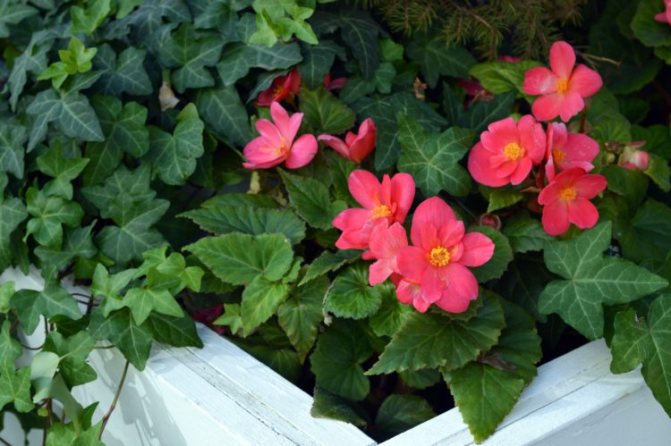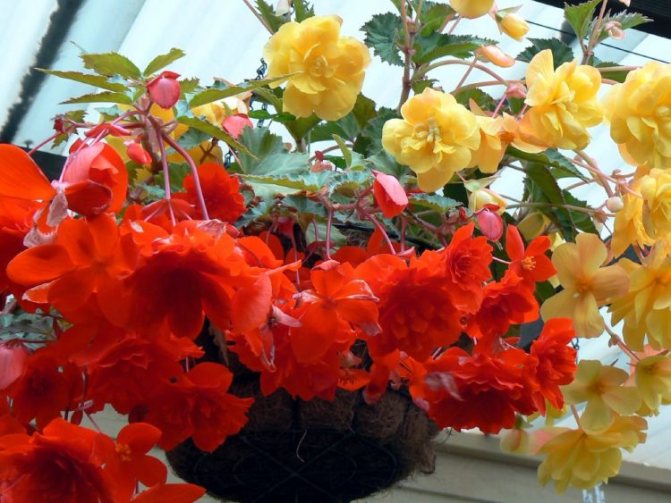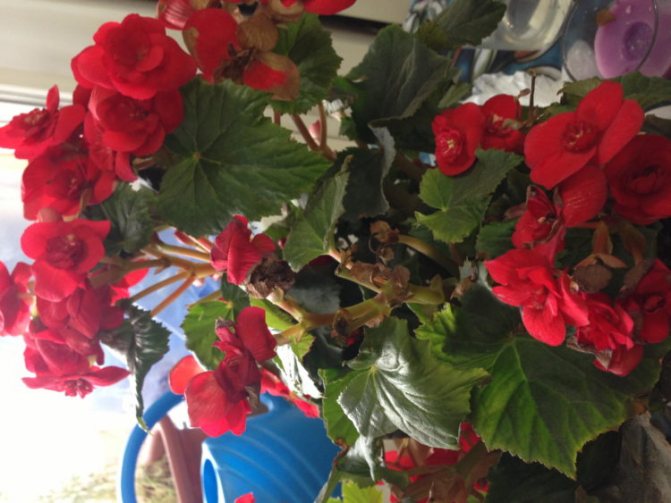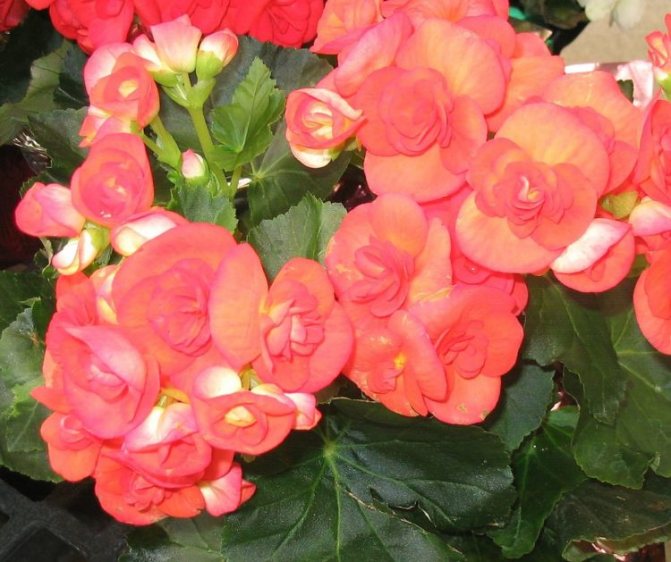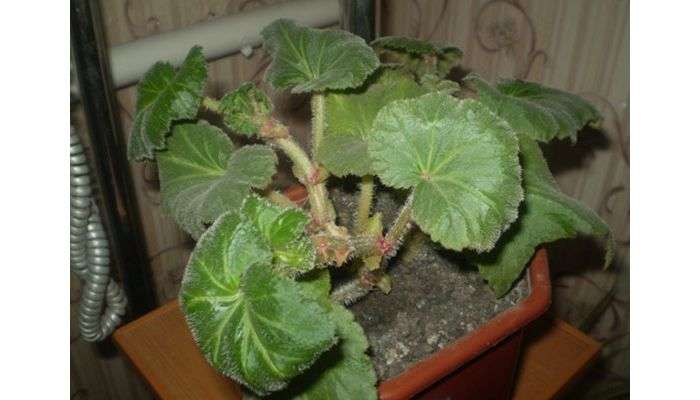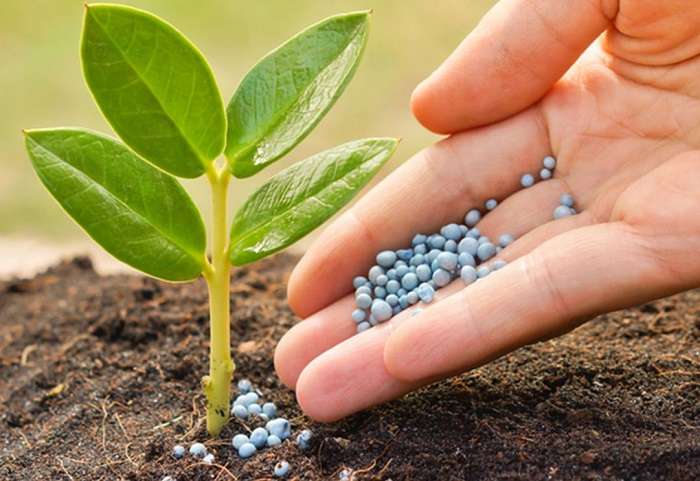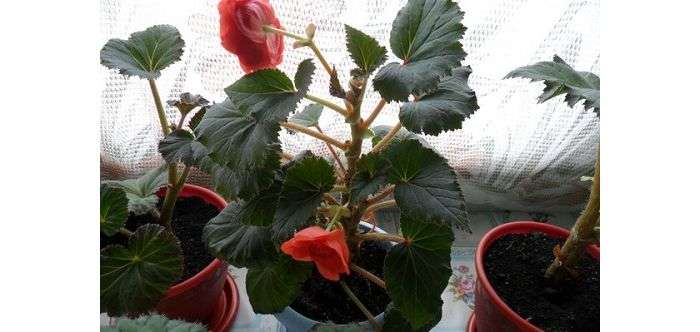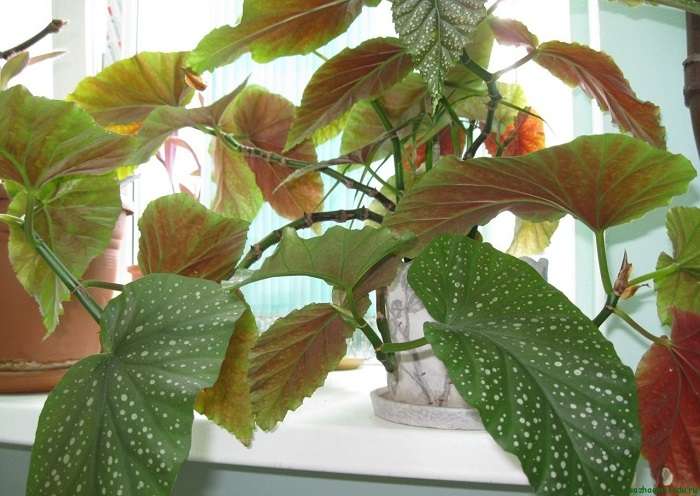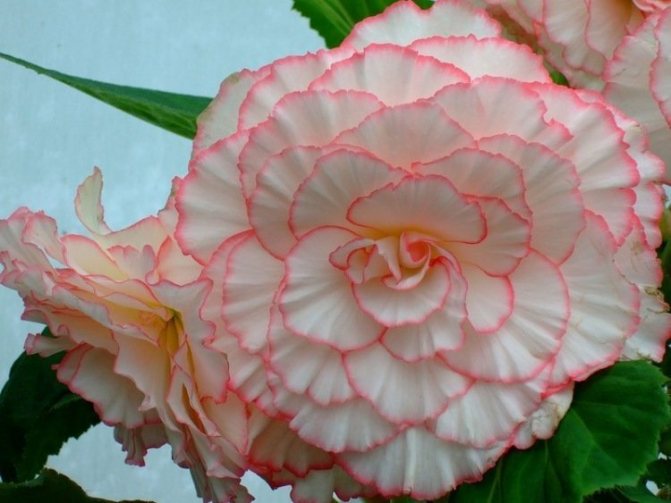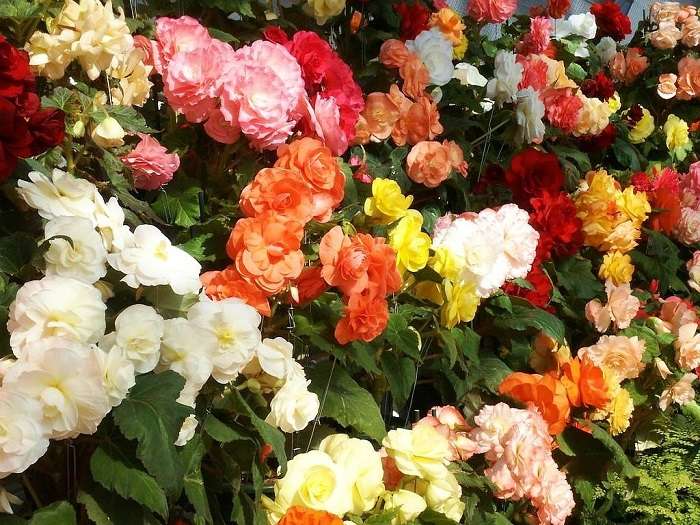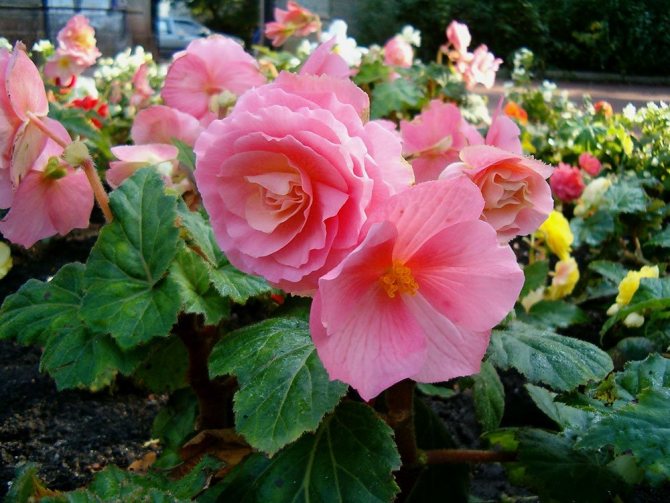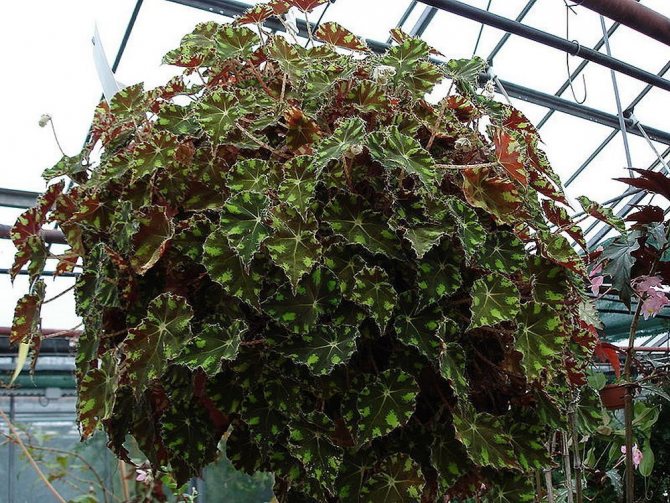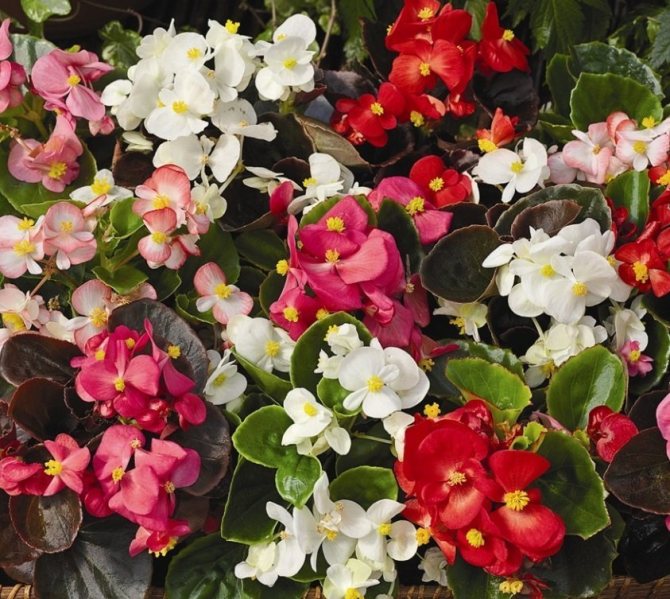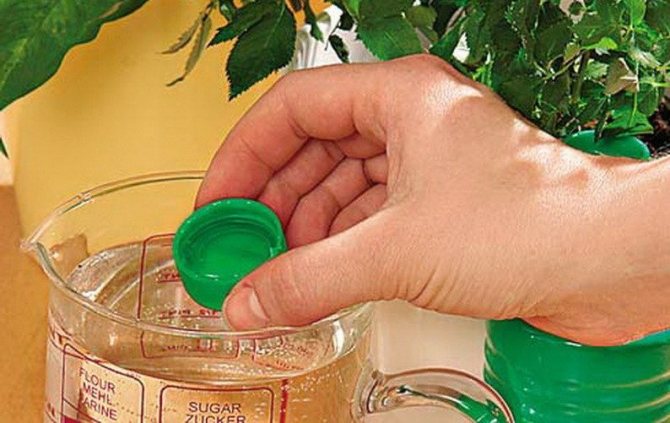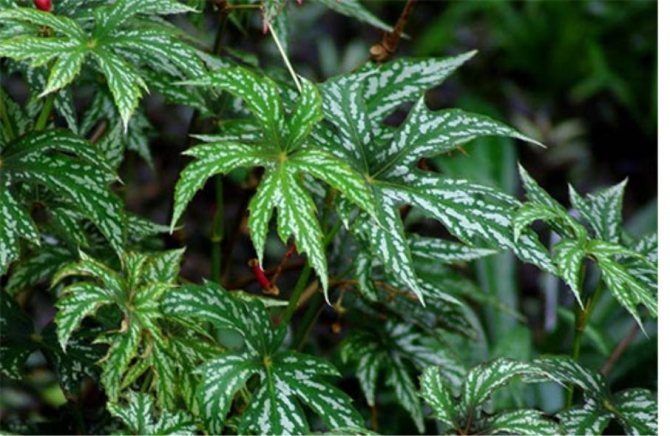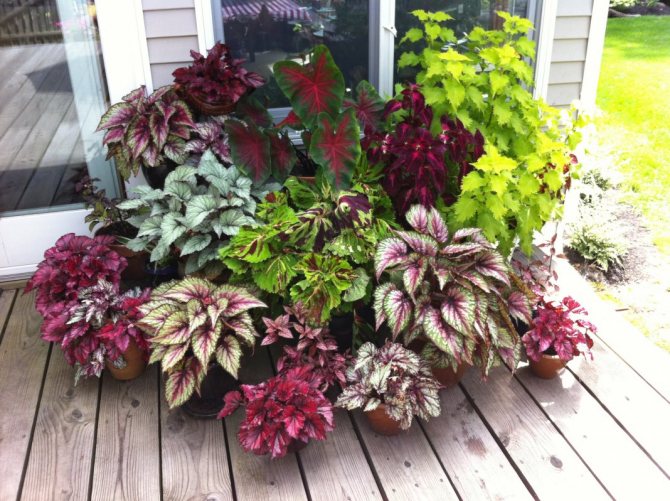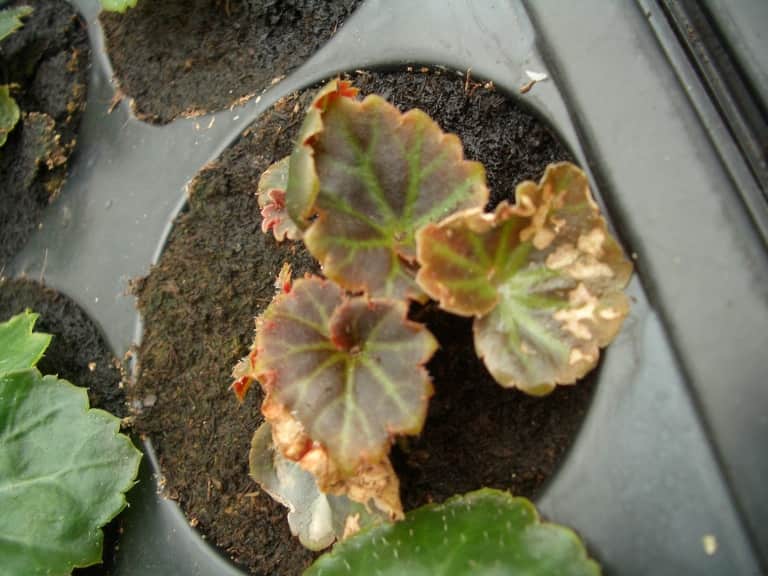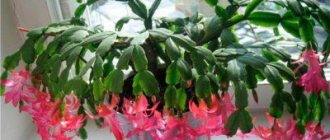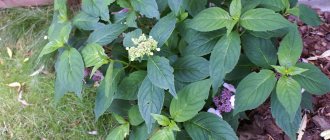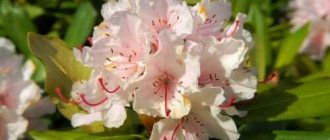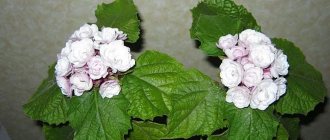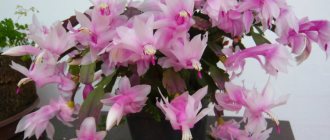When does flowering begin and how long does this period last?
Blooming begonia cannot go unnoticed due to the large number of inflorescences. The most common species of this plant bloom on average from May to November, but in general, the duration and time of flowering depend on:
- Plant varieties... Terry large-flowered species bloom less than others.
- Growing method... In the open field, the flowering period is limited due to weather conditions and the need to transplant into the house. At the same time, there are species that, after transplanting into a pot, bloom until spring.
- Care... It is necessary to create comfortable conditions and provide proper care, otherwise the flowering will be short-lived or not at all.
- Time of awakening... If you start to engage in the awakening of the plant from a state of dormancy at the end of February, then flowers will appear in April-May.
- Root system species... Begonia with a tuberous root system blooms in the summer-autumn period, with a normal one - almost all year round.
Reference! It is possible to extend the period and increase the intensity of begonia flowering by removing the female flowers from the very formation, but it will be impossible to get seeds.
Diseases, pests and problems in the cultivation of begonia Elatior
Under the right conditions and good care, Elatior begonias never get sick. They are much more resistant than all flowering begonias. In fact, they can only suffer from rot due to inaccurate watering and dampness.
When taken out into the garden or placed on balconies, Elatiors often suffer from powdery mildew. Fighting with fungicides on flowering begonias is useless, it is better to destroy the affected bushes as soon as possible. Occasionally, in the open air, plants are also threatened by aphids, which are best dealt with with insecticides.
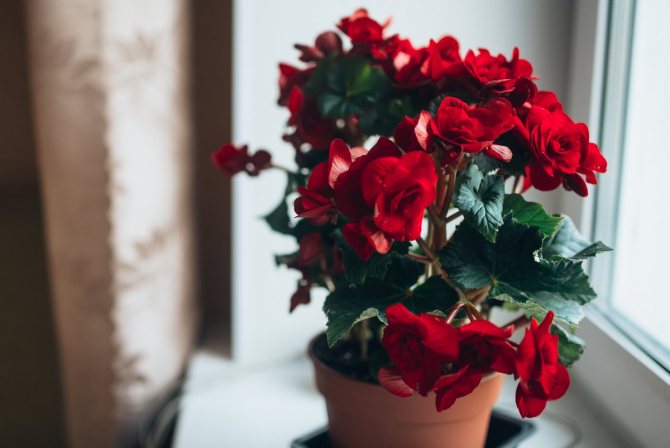
Under the right conditions and good care, Elatior begonias never get sick.
Features of the process, what happens to the houseplant at this time?
The main feature of begonias is the presence of heterosexual flowers.... Female flowers with pistils differ from male flowers with stamens by the presence of a bulge (future seed pod) on the back side. After the plant has come out of dormancy, it begins to accumulate strength and nutrients for future flowering.
Buds are laid, reproductive organs are formed. When the begonia is ready for breeding, male and then female flowers bloom (you can find out about the signs of male flowers on the plant, as well as the varieties of begonias here).
If the plant is pollinated, the male flowers wither, and in the female, the fruit-box with seeds begins to ripen. At this time, the plant is most active - it consumes many nutrients and trace elements and needs a lot of water, light and heat. How to grow and care for room begonia so that it is beautiful and healthy, we told in our material.
Description
Begonia is one of the most beautiful plants in its family. She comes from hot tropical and subtropical climates - Africa and South America. There are many types of begonias. Each has its own characteristics. Some have bright flowers and stems, others have muted colors with shades of brown.
There are shrubs, semi-shrubs, and herbaceous plants. Among them there are miniature species up to 5 cm and large varieties, striking in their height up to 3-4 m. Begonia grows along river banks and in small crevices of rocks. Some begonias are found on tree trunks.
How does flowering happen: photo
Begonia is distinguished by abundant, bright flowering and a variety of flowers.: from small and simple to large and terry (about the types of annual and perennial begonias, as well as useful recommendations for care, read here). Flowering begins when parts of the flower become available and free for pollination. After that, a multicolor or monochromatic flower blooms.
For that longer flowering, the plant should be fed with a solution of potassium nitrate, and then weekly with complex mineral fertilizers. Also, for a longer flowering, wilted flowers must be cut off (how to properly cut begonias for lush flowering, read our material).
The necessary conditions
For begonias to bloom at home, a number of conditions must be observed:
- no drafts - the plant must be protected from the wind;
- humidity - begonia needs high humidity, but you cannot spray it, as brown spots form on the leaves due to water falling on the leaves;
- comfortable temperature - in summer the temperature should be + 21-23 degrees, in winter - + 15-18 degrees;
- watering - it is necessary to water the plant constantly in small doses, pour excess water from the pan;
- ventilation - for the normal development of begonia, an influx of fresh air is needed;
- lighting - this is a light-loving flower that needs a bright, but diffused light;
- feeding - during active growth of leaves and shoots, begonia should be fed with mineral fertilizers with a high potassium content, to stimulate flowering - with complex fertilizers for flowering plants;
- suitable soil and pot - the soil should be peat, deciduous or garden, with the addition of sand in proportions 1: 1, and the pot - clay;
- dormant period - if the begonia is not resting, it will not have the strength to bloom (read how to care for begonia during the rest period and prepare it for awakening, read here).
Everything is important - even the composition of the soil
On the one hand, the soil for planting plants does not have special requirements, but experts recommend buying in specialized stores exactly the one that is intended for begonias. If it is possible to prepare it yourself, then you will need to: add the same amount of a mixture of black soil and peat to half of the volume of leafy land. The bottom of the pot should be laid out with pebbles, then covered with about a centimeter layer of sand.
Transplants are performed in the event that the roots have grown too much and they are cramped in the old pot, naturally, a larger volume will be required. The optimal transplant time is early spring. The remains of the old soil are removed from the roots, and the roots themselves are treated with a solution of potassium permanganate. All defective and rotten roots should be identified and carefully removed.
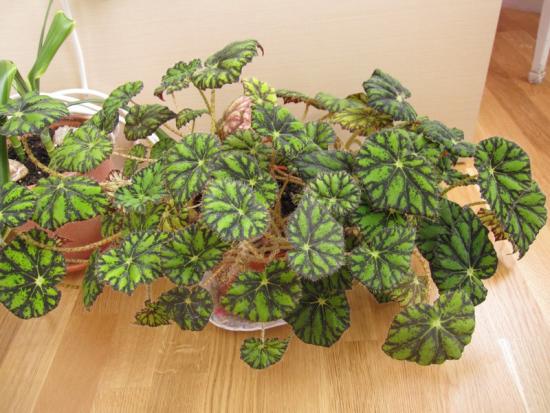

Transplanted plant:
- do not put in the sun
- watered little by little, very often
Why doesn't it bloom and gives only foliage?
It happens that indoor begonias do not bloom. There may be several reasons for this:
- Type of plant... Inflorescences are not formed on decorative deciduous varieties.
- Age... For flowers to appear, at least 5 rings must be present on the main stem.
- Incorrect lighting... Do not place the plant in direct sunlight or in the shade.
- Dry air... Begonia does not bloom indoors with dry air.
- Unsuitable temperature conditions... At too high or low temperatures, as well as when it fluctuates, the plant experiences stress.
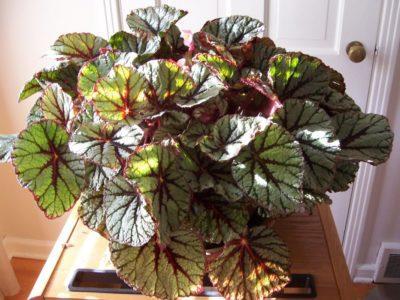

Lack of a dormant period... During rest, the begonias form buds, which bloom in the spring.- Cold air... The plant should not be in a draft.
- Lack of nutrients... In the absence of top dressing, the tuber will not develop and the flowers will fall off.
- Improper watering... Due to waterlogging of the soil, the root system can rot, and with a lack of water, the begonia leaves dry out, the buds die off (read about why the buds and leaves fall and how to save begonia, read here).
- The presence of nitrogen in fertilizers... This element stimulates the development of the green mass of the flower, which harms the formation of inflorescences.
- Pests... They damage stems, leaves, and suck the juices out of the plant.
- Burnt roots... This is due to excessive fertilization, temperature drops, direct sunlight on the plant.
Attention! A sign of insufficient air humidity is dry tips of begonia leaves. Having identified the reason for the lack of flowers in begonias in time, you can change the care and achieve a positive result.
Further, an informative video about the reasons for the lack of flowering in begonia:
https://youtu.be/JwjQu5poUxM
What to do if begonia does not bloom with double flowers
Why does morning glory not bloom
The double flower is truly beautiful and unique, which is a distinctive feature of begonias. But it so happens that instead of the expected flower, the simplest ones grow. This problem is especially common in tuberous plants. There are several main reasons why this may be due to:
- the tuber has insufficient strength, especially for young plants that bloom for the first time. This is due to an insufficient dormancy period of the plant and improper reproduction.
- lack of strength in the plant itself due to illiterate care.
- one should not exclude such a symptom as an error in production, especially for those seeds that were purchased in the store. Therefore, it is better to purchase the plant itself.
Note! It is worth reconsidering the care and waiting for the next flowering period, maybe the begonia will gain strength and give flowers the desired properties.
How do you get the plant to bud?
- Before the required age, flowering can be triggered by using growth stimulants.
- Provide good lighting by placing the plant on a southeastern or southwestern window sill, additionally illuminate when the sunny day is short.
- Increase the humidity using a spray bottle, a container of water or a damp cloth on a radiator. You can also put the flower on an inverted pallet, and the resulting structure on a larger pallet, around the circumference of which you need to pour expanded clay and moss and periodically sprinkle them with water.
- Place the begonia in a warm place, exclude temperature fluctuations and drafts.
- Send begonia for a dormant period, for which you need to reduce the lighting, cover it with an opaque towel, lower the temperature to +17 degrees, gradually reduce watering. After three months of rest, gradually increase the amount of moisture and light, move to a warm place.
- Eliminate the presence of parasites by constantly examining the plant, if necessary, treat the flower with a fungicide. Most often, begonia is affected by spider mites, weevils and aphids.
- Fertilize begonia with a complex of minerals, excluding nitrogen.
- Enter the irrigation mode, drain excess water from the pan, make sure that the soil does not become limp and dry.
- Carefully follow all the rules for caring for begonia so that the plant is healthy and blooming.
Before looking for a method that can make begonia bloom, you need to determine the reason for the lack of buds.


